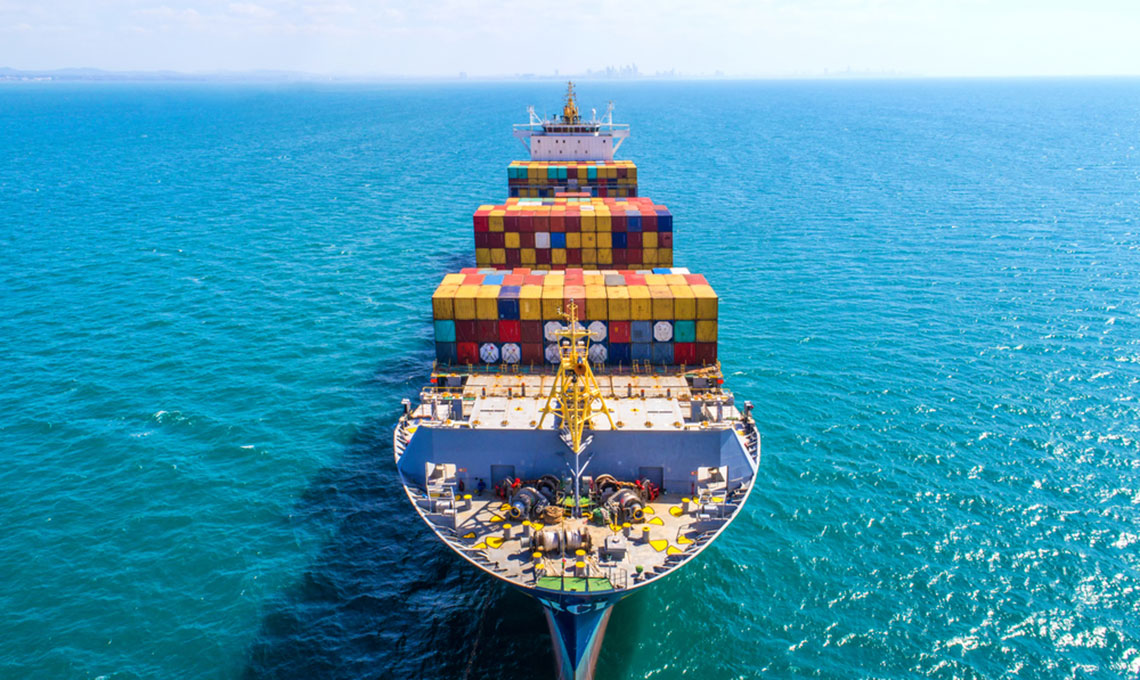Journal of Commerce – Commodity, Semiconductor Crunch Threatens Reefer Capacity
Apr 06, 2022

News
Apr 06, 2022

While logistics contingency planning is often centered around the risk of a single point of failure, recent geopolitical events have the potential to create several challenges in the cold chain transportation sector. This risk could be further upstream as we consider the potential supply shortage of materials required for reefer container manufacturing.
As the pandemic showed, reefer trade is the most resilient and predictable globally. The strong likelihood of continued growth creates more questions about supply meeting demand given potential upstream production dependencies linked to raw material sourcing.
Intermodal cold chain stakeholders across the globe agree that the Russia–Ukraine war may have far-reaching implications on the reefer container trades given possible asset dislocation and reefer container availability challenges that could last for months. While the oil supply shocks paired with downward consumer demand forecasts are making front page news, there has been less attention on critical raw material sourcing challenges and semiconductor production delays, both key to reefer container production.
Most recently, there have been acute supply shocks related to sourcing nickel, copper, aluminum, stainless steel, and semiconductors, which are all significant components to reefer machinery and container manufacturing. In fact, most reefer container machinery controllers, refrigeration mechanics, and containers are critically dependent on nickel, stainless steel, and semiconductors, which could be difficult to source as the supply shock for such commodities reverberates across the globe.
With supply being constrained for such commodities, inflation may be another element that impacts cost-effective operations being scaled properly based on asymmetrical demand for dry and reefer container production that takes place at the same facilities.
The Russia-Ukraine region supplies various raw materials that are critical to manufacturing the chips that are the primary component to reefer machinery controllers, enabling efficient and fault-tolerant reefer container operations. Ukraine is a major source of inert gasses, such as neon required for the semiconductor lithography process. Any disruption in the supply of neon and other semiconductor elements from the country could trigger shortages, which, coupled with associated cost inflation, could crimp reefer machinery supply.
Russia is also an important producer of metals such as aluminum, nickel, and copper, all of which are primary raw materials that are required for reefer container production. A disruption in the supply of any of these metals could cause prices of reefer machinery to rise and subsequently impact the availability and prices of new reefer containers
Supply chain congestion and severe end-to-end cargo conveyance headwinds are expected to continue through 2022. Ongoing container vessel network congestion and the Chinese COVID-19 lockdowns will likely impact both vessel capacity as well as reefer machinery capacity, which may require the reefer container supply to expand to offset the lower container velocity. This expected extension of reefer container fleets, coupled with forecasted raw material and commodity constraints, could lead to a perfect storm whereby new production cannot meet ongoing unprecedented reefer container demand.
As the shipping environment adapts to recent events by matching capacity with throughput reduction constraints, labor, and other inland delivery challenges, there is increasing risk of the market, once again, being mismatched with seasonal demand. This is not only the case for all container markets, but more amplified in the food logistics areas related to the disruption in global sourcing being affected by the Russia-Ukraine war supply shocks.
The potential of further COVID lockdowns in China and significant container imbalances in the north-south reefer trades, on top of an estimated 2022 accelerated reefer demand growth estimated by Drewry to be 4.2 percent, may lead to reefer container availability shortages as early as the second half of 2022. Supply is also soaked up by reefer cargo and empty equipment unable to move in and out of Russia. This combination of equipment deacceleration factors will create hurdles to having enough reefers positioned for the seasonal push that comes toward the end of the year.
The current environment has the potential to lead to further congestion with a capacity deterioration of 11-13 percent over the next few months, layered on top of reefer raw material supply shocks could have a net impact of an undersupplied reefer container market. The below market growth vs. net capacity adjusted for supply constraints and delays highlights an outlook that reflects a potential reefer availability shortage for the second half of 2022.
Although supply chain experts are espousing that the Chinese ports are more resilient to staff shortages and transport disruption, there remains uncertainty and fear that the recent China COVID outbreak may force port facilities to shut down. Any port closures, especially while we are facing global port disruption related to the Russia-Ukraine war, could have a “bullwhip effect” on the entire global supply chain. Food supply shocks that have rapidly shifted refrigerated and general food sourcing have made the landscape even more volatile.
Amid these gathering storms, shippers and container operators must prepare by making significant investments in cold chain intermodal capacity, or the industry risks a situation whereby shipment conveyance and outcomes fall woefully short of what is required.